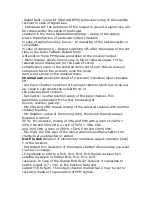
The JETI DUPLEX EX series of receivers are designated to operate
with the JETI DUPLEX EX transmitters using the 2.4GHz band. Thanks
to the fully digital and bidirectional communication between the
transmitter and receiver the Duplex EX system offers many new
features and concepts for the remote control pilot.
An additional R5 auxiliary receiver can be used to complement the R9,
R11, R14 and R18 receivers. The DUPLEX EX transmitters and
receivers take advantage of the latest modern technologies, precise
manufacturing and exhaustive test methods to provide a system that
gives you maximum safety and reliability. The DUPLEX EX system
provides extended capabilities by allowing the use of telemetry data
transfer to give unparalleled insight into the actual conditions of your
model during flight. The JETIBOX PROFI allows you to view
telemetry data either in parallel to the Jeti Transmitters or as a stand-
alone system when used with a Jeti receiver. You can use the
FlightMonitor program to view and analyze your recorded telemetry
data on your PC.
Except for the larger R14 and R18, any of the US Jeti receivers can
be used as auxiliary receivers to compliment any other US Duplex EX
receivers. Output for the US receivers R5 through R11 can also be set
to be either traditional servo output or single-line PPM output. This is
useful when the receivers are used as auxiliary receivers or for use
with other RC equipment where PPM input is desired.
Power Supply:
You can supply power (5-8.4V) to Duplex EX receivers through the
use of NiCad batteries, stabilized voltage supplied by the BEC from
your motor controller or by using Li-xx cells and a voltage regulator
like the MAX BEC. Make sure that your selected power supply can
supply enough current to power all of the servos and the receiver in
your aircraft. If all servo connectors in your receiver are being used,
you can use a Y- cable to supply power to your receiver. You can
supply power to your receiver through any receiver port EXCEPT for
the port marked “Ext”. This output is used only for telemetry sensors
or expanders. The EPC (External Power Connector) R11, R14 and
R18 receivers are equipped with a separate Multiplex power supply
connector. We recommend that you use this connector for these
receivers and your servo power supply because of its high current
capability and reliability.





























